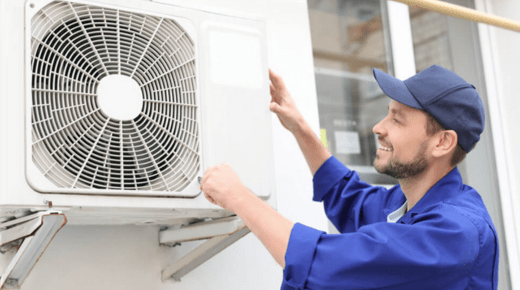How to Prepare Your Home for Air Conditioning Installation – Essential Steps

As the sweltering heat of summer approaches, ensuring that your home is prepared for air conditioning installation becomes crucial. A well-prepared space not only facilitates a smoother installation process but also optimizes the efficiency and longevity of your new AC unit. Here’s a comprehensive guide on how to prepare your home for air conditioning installation.
1. Assess Your Home’s Cooling Needs
Before the installation process begins, it’s essential to evaluate your home’s specific cooling requirements. This involves assessing the size of your home, the number of rooms, and the level of insulation. Engage with a professional HVAC contractor to perform a load calculation, which determines the appropriate size and capacity of the air conditioning unit needed. An undersized unit will struggle to cool your space effectively, while an oversized unit may lead to inefficient operation and increased energy costs.
2. Choose the Right AC Unit
Selecting the right type of air conditioning unit is vital for optimal performance. Options include central air conditioning systems, ductless mini-split systems, and window units. Central AC systems are ideal for whole-home cooling and require a network of ducts, while ductless systems are suitable for homes without existing ductwork and offer targeted cooling. Consult with your HVAC contractor to determine the best option based on your home’s layout and cooling needs.
3. Clear the Installation Area
To ensure a smooth installation, clear the area around the intended location of the ac unit. For central air conditioning systems, this means clearing the area around the outdoor condenser unit and the indoor air handler. For ductless mini-split systems, clear the wall space where the indoor unit will be mounted. Removing any obstacles or debris will provide the installation team with ample space to work and prevent potential damage to your property.
4. Prepare Electrical and Ductwork
Air conditioning installation requires proper electrical and ductwork preparations. Ensure that the electrical system can handle the power requirements of the new AC unit. This may involve upgrading the electrical panel or installing a dedicated circuit. If you’re opting for a central air conditioning system, inspect and, if necessary, clean or repair existing ductwork to ensure optimal airflow. For ductless systems, verify that the wall where the unit will be mounted is suitable and free from obstructions.
5. Schedule the Installation
Coordinate with your HVAC contractor to schedule the installation at a time that is convenient for you. Air conditioning installation can take several hours, so plan for a day when you can be present to answer any questions and ensure that everything proceeds smoothly. Additionally, consider scheduling the installation during off-peak times to potentially benefit from lower labor costs and avoid the rush during peak seasons.
6. Secure Permits and Inspections
Depending on local regulations, you may need to obtain permits for air conditioning installation. Your HVAC contractor should be familiar with the permit requirements in your area and can assist with obtaining them. Additionally, ensure that any required inspections are scheduled and completed to comply with local building codes and regulations.
7. Prepare for Post-Installation Care
After the installation is complete, there are several steps to ensure the longevity and efficiency of your new AC unit. Schedule regular maintenance with a qualified HVAC technician to check for any potential issues and to keep the system running smoothly. Regular maintenance includes cleaning or replacing air filters, checking refrigerant levels, and inspecting the system for any signs of wear or damage.
8. Understand Your System’s Operation
Familiarize yourself with the operation and maintenance of your new air conditioning system. Review the user manual provided by the manufacturer and consult with your HVAC contractor on how to use the thermostat effectively. Understanding how to operate and maintain your AC unit will help you maximize its performance and extend its lifespan.
Conclusion
Preparing your home for air conditioning installation involves several critical steps, from assessing your cooling needs to ensuring that the installation area is clear and ready. By taking these essential steps, you can facilitate a smooth installation process and enjoy the comfort of a well-cooled home throughout the hot months. Consult with a professional HVAC contractor to guide you through each stage of preparation and installation, ensuring that your new air conditioning system meets your needs and performs efficiently.



